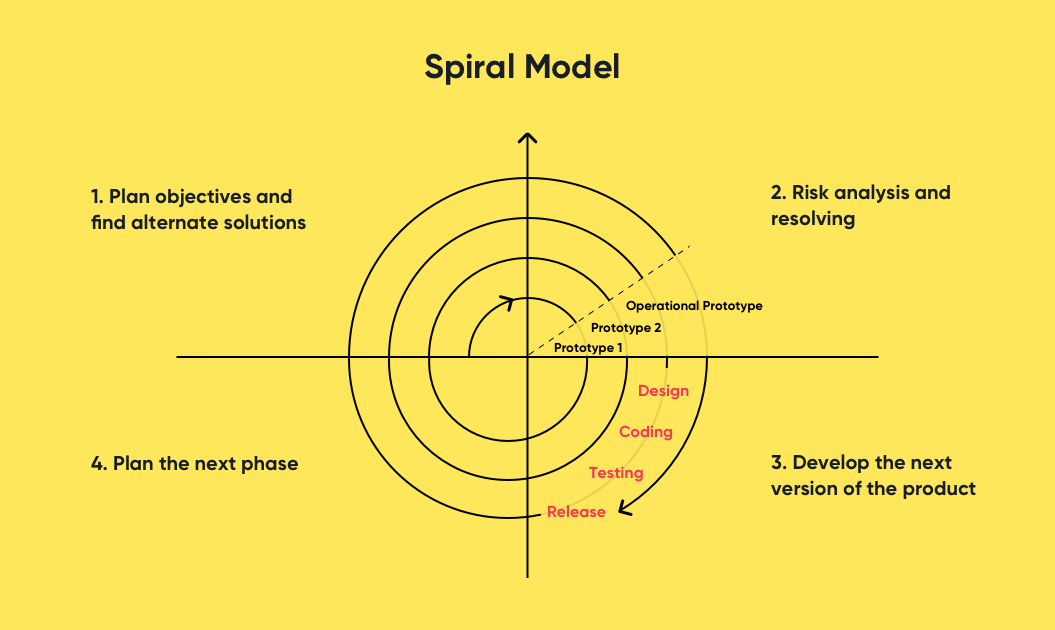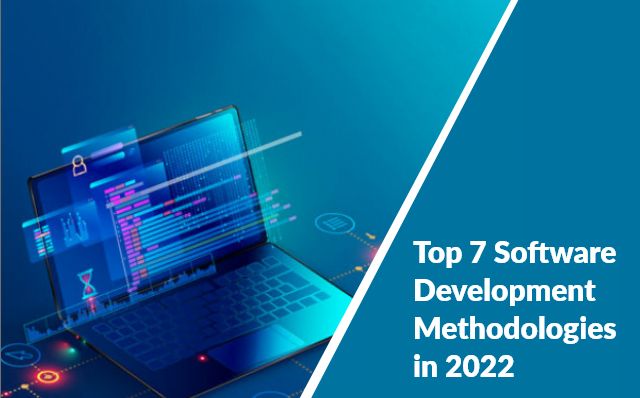To develop software, you have to select the right development methodology. Things you should consider while choosing a methodology are the organization’s culture, flexibility, and the likes. Software development methodologies have improved over the years. The ones developed recently are a lot better than the old ones.
At times, you don’t have to switch to the latest software development methodologies. If the methodology you’re currently using is still working, you should avoid changing to another one. As we go further, you will learn more about the development methodologies available for use. By using a software development methodology, you can easily design, test, deploy and keep maintaining software products.
While using a software development methodology, you will have to go through different stages. Those stages are referred to as the software development life cycle. Some of the stages involved are data gathering, development, deployment, and the likes. The difference between software development technologies is that they use a different approach. By employing the service of Esferasoft, the best methodology will be used in building your software. Some software development methodologies in 2022 are explained below
Waterfall software development methodology
It was created by Dr. Winston. The methodology follows a sequence in project management. It makes use of all the processes involved in the software development life cycle. The only difference is that it works in a logical progression.
When you progress to a new level of software development, you can’t go back to the previous level. That is one of the main cons of waterfall methodology. When there is a discussion about old software development methodologies, it is always centered on waterfall methodology. The advantages and disadvantages of the methodology are listed below.
Pros
- Everyone on the team must understand everything they are building from the start.
- Projects can be easily managed. All that is required are good structure and steps.
- It is highly recommended for a team with minor projects. Even though the methodology can be used for major projects, it won’t be as effective as when it is used for minor projects.
Cons
- After passing any stage you can’t return to the previous stage. All you can do is proceed to the next stage.
- The client perspective is not considered. If they change of their demands, it won’t be addressed.
- No testing is carried out in waterfall methodology until the whole process has been completed. Since no testing is carried out, the time required for fixing and launching will be prolonged.
Agile software development methodology
Unlike waterfall methodology, agile methodology gives an incremental approach. Even though it has the same set of steps as the waterfall methodology, it is quite different. You can always move between stages. This methodology is developed from 12 principles. For an organization to use the agile methodology, they have to follow all the principles. Some of the main features of the methodology are speed, functional setups and communication.
The agile team consists of three main professionals. As it consists of designers and testers, developers are also involved. To start and finish a new task, those three professionals would work in cycles. When there are changes to be implemented, an addition is made to the product backlog. That is how the team can easily work on the task again.
Pros
- Since a minimum viable product is used, marketing would be faster. All important features are present in the minimum viable product.
- Customers matter a lot in the agile methodology. Their perspective and feedback are always considered while working on a better product.
- After each sprint cycle, agile testing is carried out. This helps to reduce the time needed to get the software to run. It also speeds up the whole software development process.
- Cross-functional teams are perfect for the agile methodology. From designers to engineers, everyone works to achieve a common goal.
Hire Top 7 Software Development Methodologies in 2022
Cons
- While the project progresses, requirements increase with time.
- No documentation is carried out in agile methodology. The reason is that software requirements are never consistent.
- The team might experience breaking points due to miscommunication, Gold plating, and other reasons.
- Even though agile works perfectly for small teams, it is not recommended for large-scale projects.
Feature-Driven Development
It is incremental software. Feature-Driven development has a lot of things in common with agile methodology. Unlike in the agile methodology, the feature list is used to determine the tasks given to people in the development team. There are five steps involved in the methodology. All the features present consist of six milestones.
Pros
- To improve communication, documentation is widely used. As a result of that, the team doesn’t meet many times.
- Since the client is the real user, a user-centric approach is used in this method.
- Scaling is easy with FDD. It also copes well when the size of a project is increased.
- Individual features are the main thing in Feature-Driven development. As it is easy to track in this method, it is also easy to iterate. This helps to reduce debt.
Cons
- FDD is not recommended for use in small-scale projects. It doesn’t work well when the development team only consists of 1 or 2 people.
- The chief programmer carries out a lot of work in FDD. As he works as a designer and mentor, he can also work as a coordinator. With all these roles, the chief programmer can be easily stressed out.
Lean Development
It is similar to the agile development methodology. It just consists of a few more features. In this methodology, changes that need little effort are always the most important. While implementing, one has to be time-conscious. The same principles used in this methodology are used in manufacturing Toyota cars.
There are seven principles involved in lean development. The first principle is to eliminate waste. Everything that is not important to the software development process should be eliminated. While developing, you might have to learn more things and apply them. The decision process is important in this methodology. If you can’t arrive at a nice decision within a short time, you should wait till you’re able to make the best decision. You can even decide late. Delivery is equally important.
To deliver as fast as possible, you might have to speed up development stages that are not important. A lot of tasks are carried out by the development team. To make teamwork effective, all its members should be empowered with the right tools that they need. After completing all your tasks, you should optimize everything and make sure they work well as one. You might even have to make certain changes.
Pros
- MVP development is usually fast and within a reasonable budget.
- Before changes are made, time is taken to think well and make the best decision. The expenses are also reduced during this process.
- The development team can take important decisions on the project. As this motivates the developers, it also makes them feel important. Productivity is increased in the process.
Cons
- There is no space for learning in this methodology. Developers that are not highly skilled can’t be used.
- The project can’t be completed without the involvement of a business analyst.
- Since there is too much room for flexibility, it takes longer to deliver.
Rapid Application Development
This methodology is derived from the agile methodology. Even though planning is important, the focus is on adaptability. The processes used in improving prototypes are used in planning design specifications. In a software development method where the user interface is important, RAD is the perfect methodology to use. RAD involves four main phases. They are user design, cutover, construction, and requirements planning.
Pros
- Since the emphasis is on prototype development, only quality products are made. Even at the beginning stages, product validations methods would have started. That is why quality software is always made.
- Since users are informed in the beginning, risks are reduced.
- Projects are always delivered on time and all processes are always within budget. The reason is that RAD speeds up the development process.
Cons
- Little or no priority on non-functional requirements. The reason is that they always have a connection with the backend.
- Even though there is flexibility in RAD, control is limited. RAD is not recommended for people that want total control of a software development process.
- It is not scalable. Since the project size and other things can increase while developing, delivery might become more challenging.
Spiral Model

As the focus of the spiral model is on risk identification, mitigation is also important. The model takes some of its features from agile and waterfall software development methodologies. There are four phases involved in the spiral model. All the phases are in a sequence. During the first phase, objectives are planned. While objectives are being planned, solutions are made. The next phase is the risk analysis. All possible risks are studied and methods on how to resolve them are developed.
After you finish developing a product, you have to keep releasing new versions. Even though different versions of your product perform almost the same task, the new versions must be better. You can also continue to make plans for new phases. When a new feature is introduced, it has to go through the customer evaluation stage. A feature can only be added if it passes the stage. If there are new changes to be made, the spiral model would accommodate them by using the linear approach.
Pros
- Since iterations are involved, it is easy to accommodate new changes.
- If the focus is on prototype development, the chance of product failures would reduce.
- After a development cycle, customer feedback is taken into consideration. It helps to release a product perfect for the market.
- The risks attached with products are considered and solutions are made for them.
Cons
- It is not recommended for small projects with little or no risk.
- For standard development, spiral practices should be followed strictly.
- Since development undergoes several phases, documentation is important.
- While the spiral cycle continues to run, deadlines and budgets might not be met.
Scaled Agile Framework
AIt is the perfect framework for people developing software at the enterprise level. As it uses agile and lean, it also uses the value of systems thinking. This methodology can also be used for large projects.
Pros
- As it uses development processes, it also uses mindsets. Both of them are combined into only one framework.
- Since bugs reduce in a scaled agile framework, product quality improves.
Cons
- Since aggressive protocols are used, developers won’t be free to test different methods.
- It is not recommended for people working on small-scale projects.
- As a result of the top-down approach in use, people in key roles don’t decide on important things.
Conclusion
There are various methods that can be used in developing software. To determine the right method, you have to consider the complexity of the software you’re trying to develop. As some software development methodologies require only one developer, others require a team of developers. The right development methodology won’t only help you build great software. It will help you ensure it matches the taste of your potential customers.

